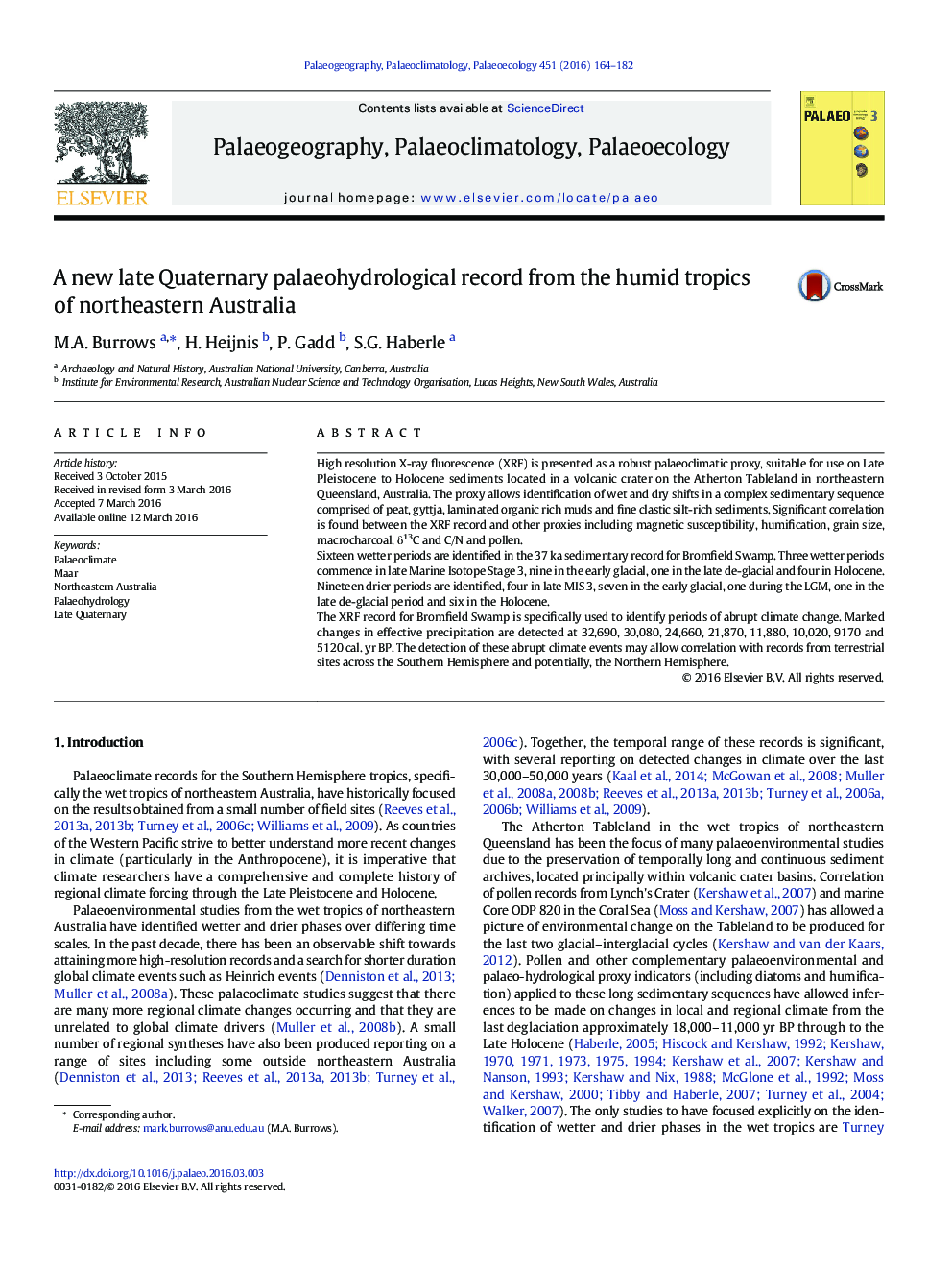| Article ID | Journal | Published Year | Pages | File Type |
|---|---|---|---|---|
| 4465724 | Palaeogeography, Palaeoclimatology, Palaeoecology | 2016 | 19 Pages |
•High resolution X-ray Fluorescence (XRF) is presented as a robust palaeoclimatic proxy•XRF identifies wet and dry shifts in a complex sedimentary sequence extracted from a volcanic crater in NE Australia•XRF record correlates well with magnetic susceptibility, humification, grainsize, macrocharcoal, δ13C, C/N and pollen•Abrupt climate events recorded at 32,690, 30,080, 24,660, 21,870, 11,880, 10,020, 9170 and 5120 cal. yr BP
High resolution X-ray fluorescence (XRF) is presented as a robust palaeoclimatic proxy, suitable for use on Late Pleistocene to Holocene sediments located in a volcanic crater on the Atherton Tableland in northeastern Queensland, Australia. The proxy allows identification of wet and dry shifts in a complex sedimentary sequence comprised of peat, gyttja, laminated organic rich muds and fine clastic silt-rich sediments. Significant correlation is found between the XRF record and other proxies including magnetic susceptibility, humification, grain size, macrocharcoal, δ13C and C/N and pollen.Sixteen wetter periods are identified in the 37 ka sedimentary record for Bromfield Swamp. Three wetter periods commence in late Marine Isotope Stage 3, nine in the early glacial, one in the late de-glacial and four in Holocene. Nineteen drier periods are identified, four in late MIS 3, seven in the early glacial, one during the LGM, one in the late de-glacial period and six in the Holocene.The XRF record for Bromfield Swamp is specifically used to identify periods of abrupt climate change. Marked changes in effective precipitation are detected at 32,690, 30,080, 24,660, 21,870, 11,880, 10,020, 9170 and 5120 cal. yr BP. The detection of these abrupt climate events may allow correlation with records from terrestrial sites across the Southern Hemisphere and potentially, the Northern Hemisphere.
